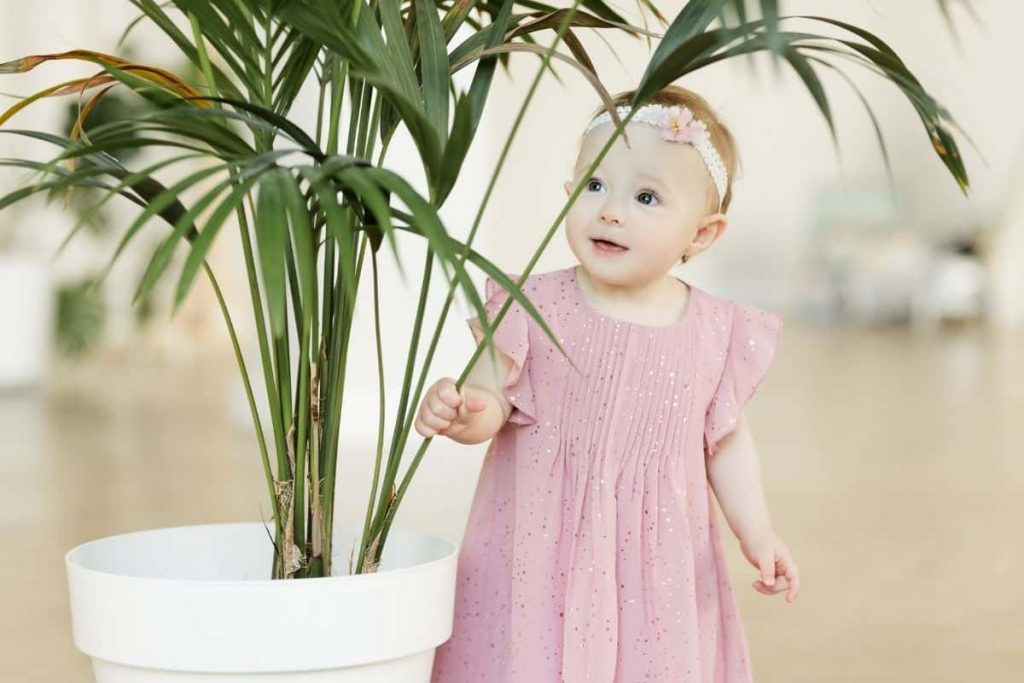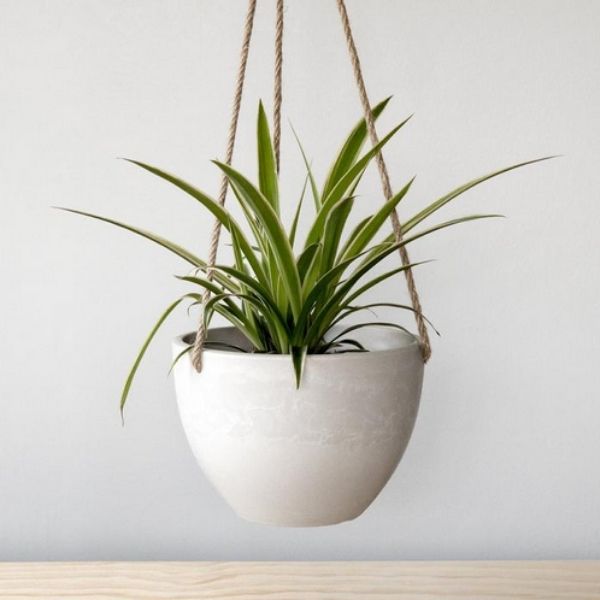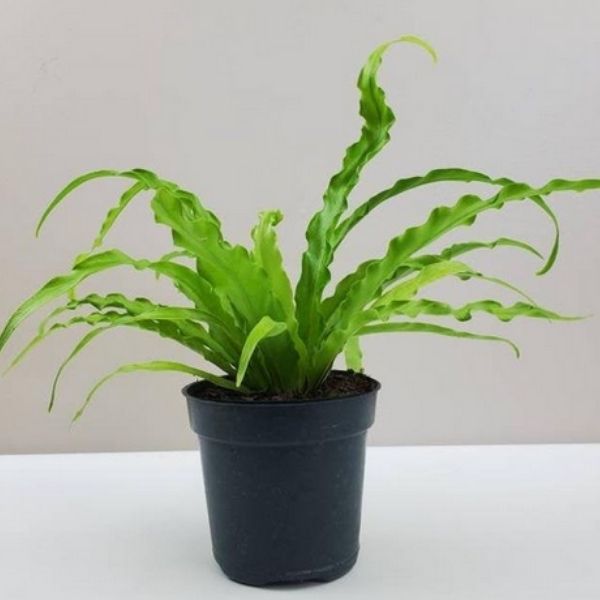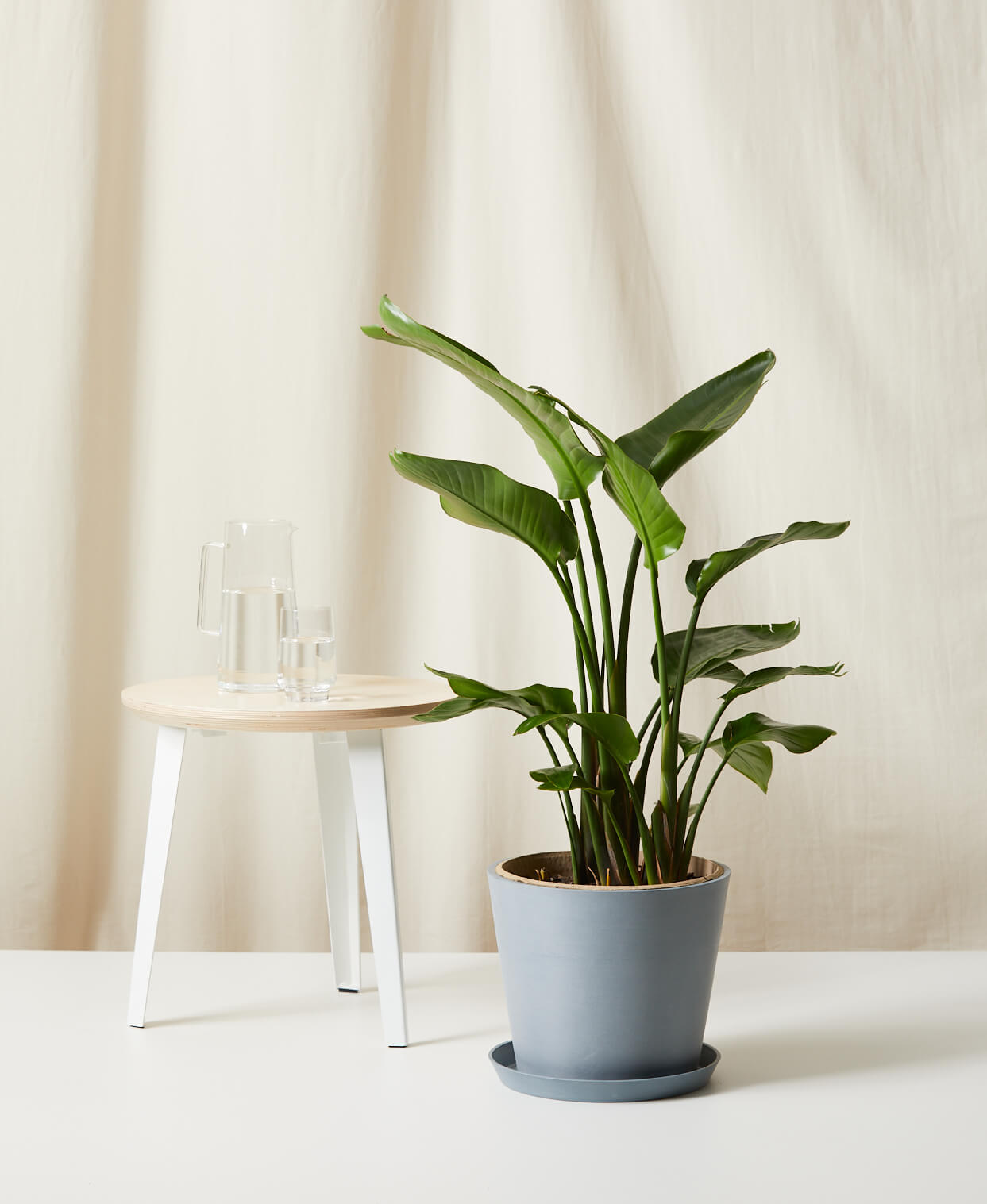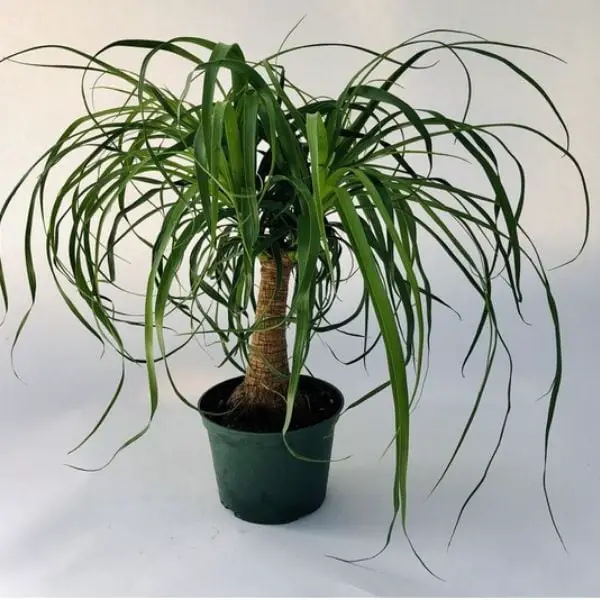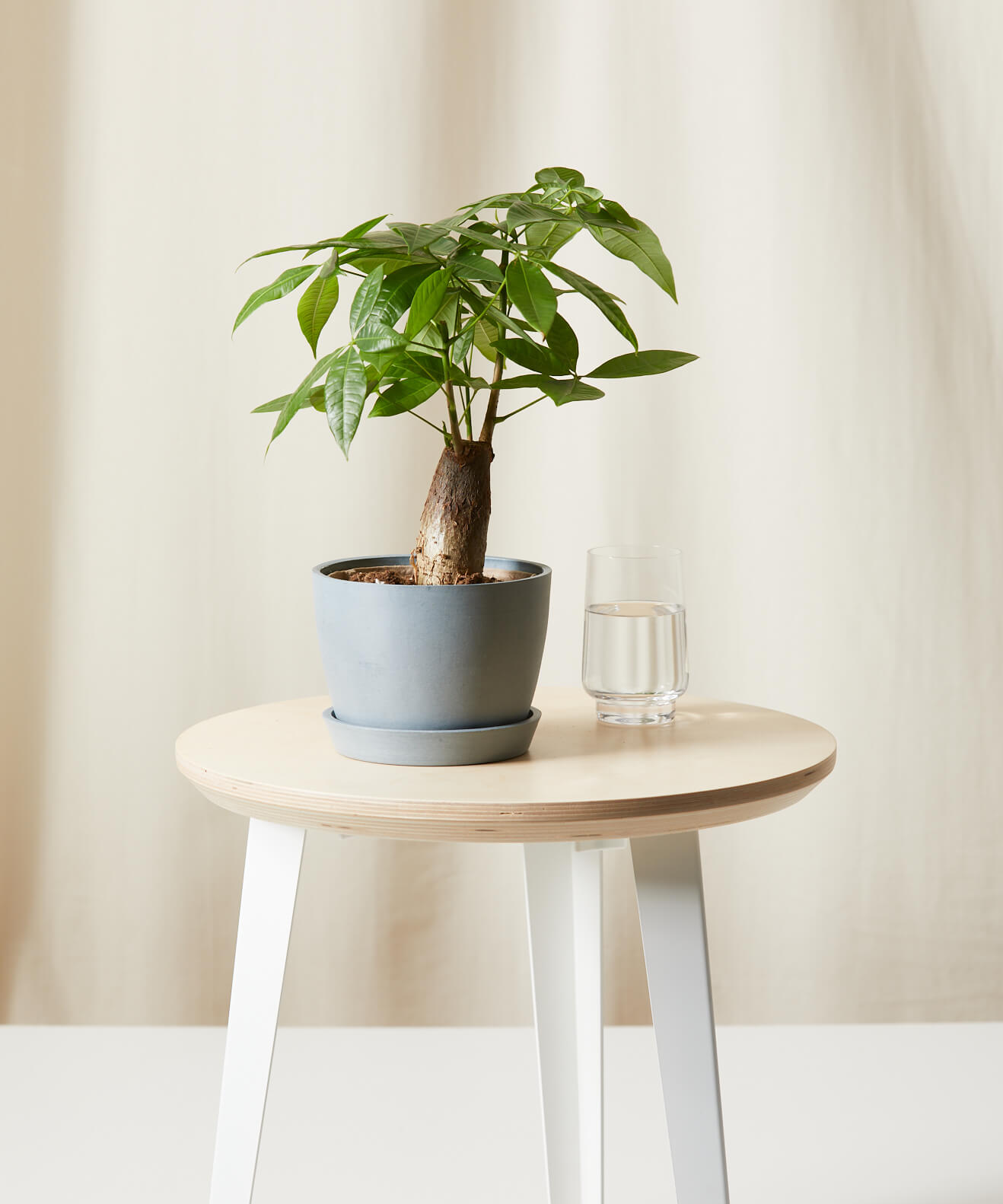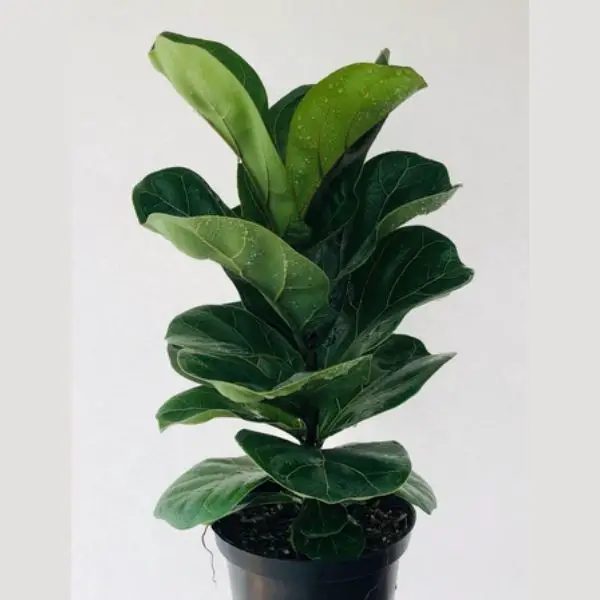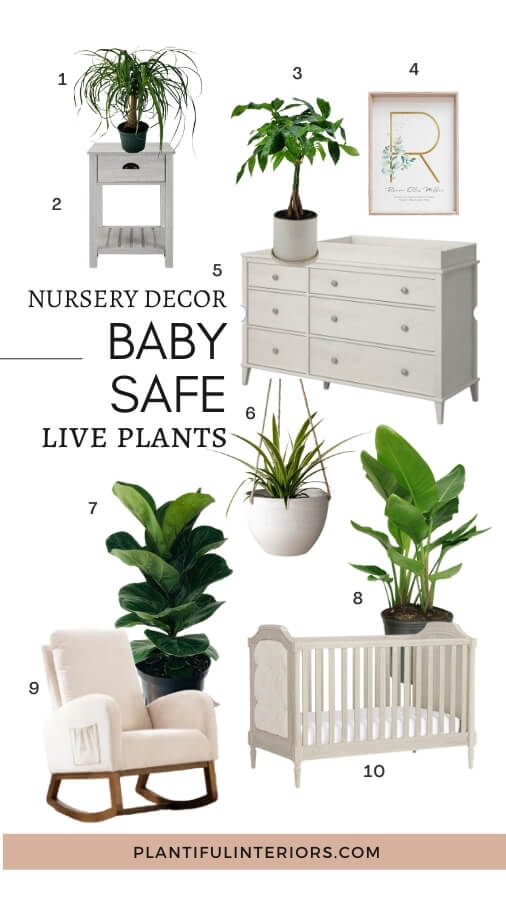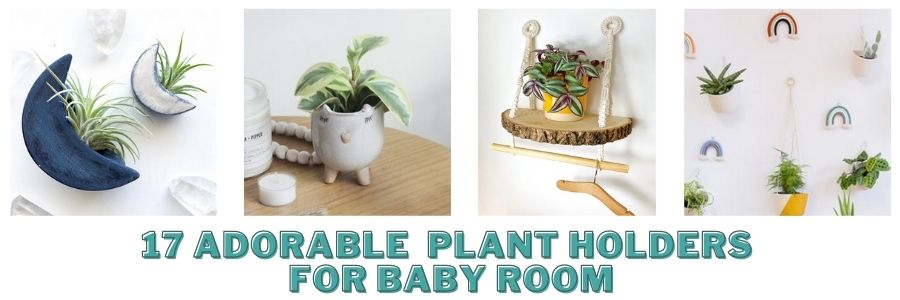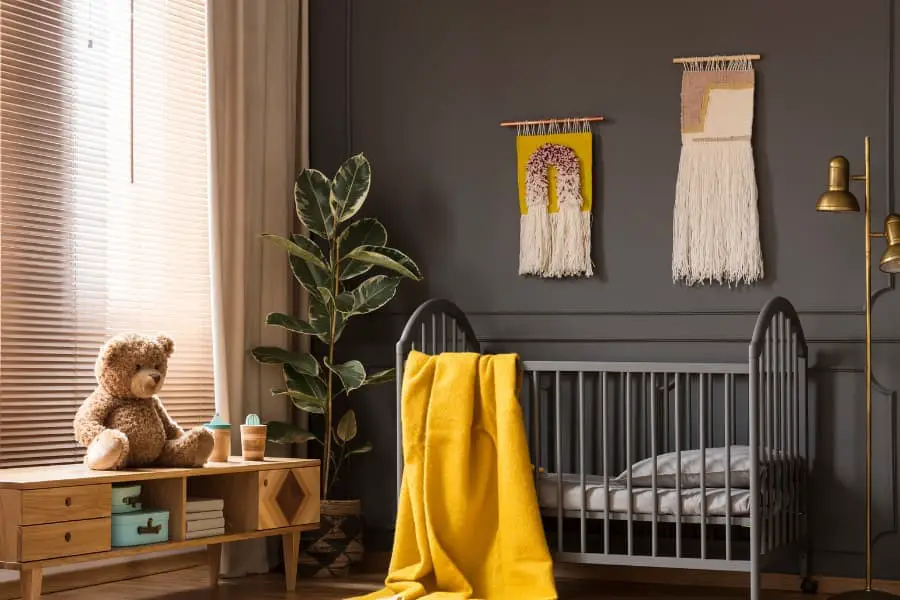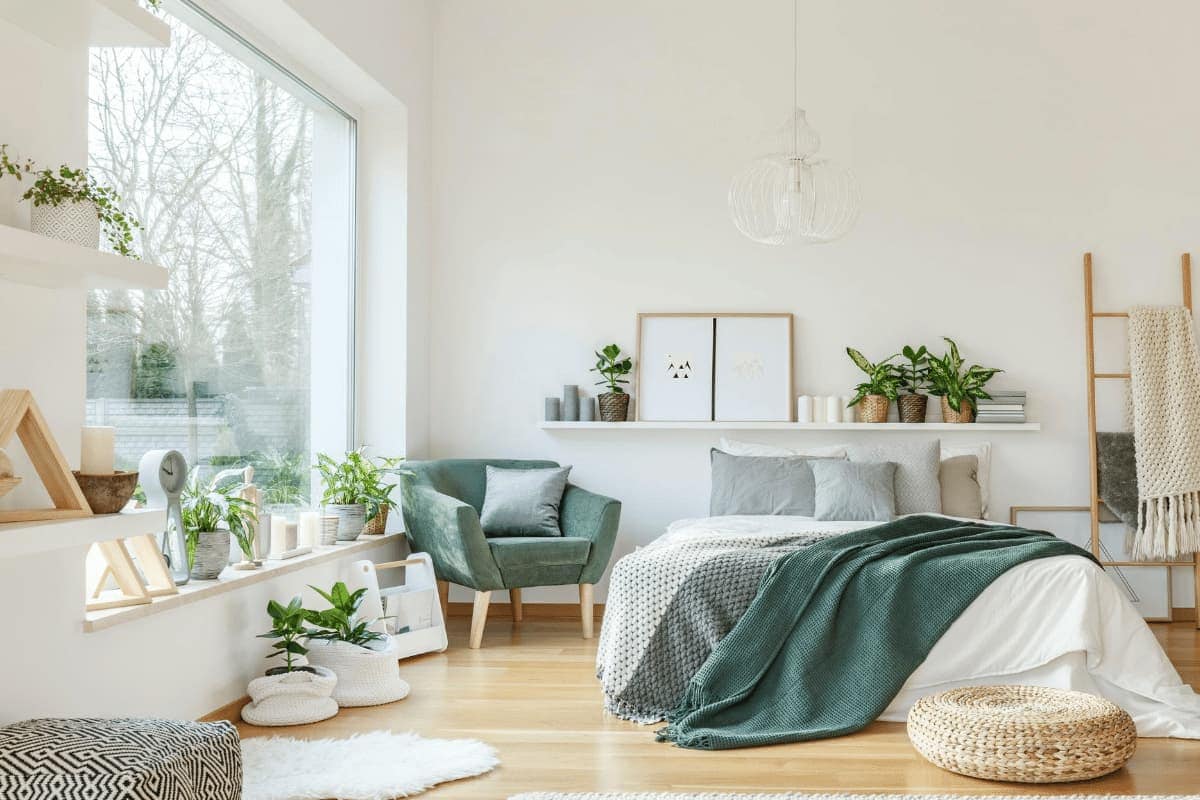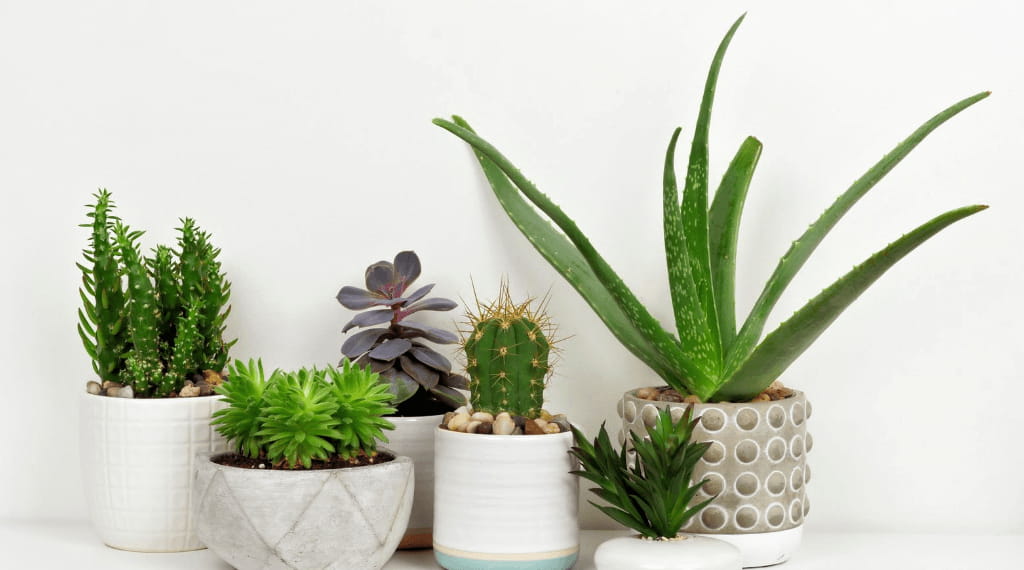Last Updated on October 5, 2021 by Plantiful Interiors
Baby Nursery Plants For 2021
You’re having a baby! Congratulations.
Decorating your baby’s nursery is likely one of the most exciting things you do to prepare for your new addition.
But, finding the right baby nursery plants and ensuring everything in the room is baby-safe can feel a little overwhelming.
Especially if you plan to incorporate some trending live indoor plants.
This post contains affiliate links. As an affiliate partner of various brands, we earn a little commission on qualifying purchases, at no extra cost to you. When you purchase through our links, you help our business to keep going. So thank you for your support! You may read our full disclaimer for more information.
Don’t fret we’ve got you covered with a list of the best plants that are safe for your baby nursery, along with what to look for when buying your new plants and which plants to avoid.
Baby Nursery Plants That are Safe and Decorative
It’s true, adding houseplants to your nursery’s decor will create a natural, soft and relaxing ambiance, but some indoor plants are poisonous and can be dangerous to your wee one.
When deciding on which plants are best for a baby’s nursery, looks matter but safety is the top concerns. Certain types of plants are safe for babies, while others should be placed out of reach or out of the house altogether.
At A Glance: The 7 Best Baby Nursery Plants That Are Safe:
Keep reading to find out why these are the best plants for your baby’s nursery, which ones are easiest to care for and where to buy healthy vibrant houseplants.
01. Spider Plant
If low maintenance is what you’re going for, the spider plant is an excellent choice.
Possibly the most popular houseplant, this non-toxic plant with its green and white striped leaves is safe for babies and animals.
Spider plants also produce beautiful white star-like shaped flowers that give a little extra aesthetic appeal to the room.
Decor Tip: Spider plants look best inside a hanging planter where it can flow over the edges. Spider Plants tend to grow quickly and can grow up to 2-3 feet so some pruning may be required.
Make sure to hang it out from the wall a few feet to allow the space it needs.
This long-stemmed houseplant is not only easy to care for, but also one of the best air purifying plants for a baby’s room, making the air in the room feel cleaner and more breathable!
According to the Farmer’s Almanac, spider plants have been used by NASA for their air-purifying qualities; if they are good enough for NASA they’re good enough for our baby’s nursery.
02. Dracaena – Baby Nursery Plants
A Dracaena plant is sure to brighten up your nursery. Many dracaena varieties boast lime green leaves atop a tall tree like stem or cane.
If your baby’s room don’t have a lot of natural light, this may be the best plant for you. Some Dracaena varieties can withstand lower light conditions.
Be sure to check the light requirements before purchasing as some prefer bright, indirect light.
Decor Tip: This plant will easily be the focal point in your baby’s room, growing anywhere between 2 to 10 feet tall.
Place it in the corner opposite the crib to give your baby something to look and to balance the height of the furniture throughout the room.
We know that your newborn is going to take up a lot of you time and attention. Your Dracaena would not mind being thought of second and can withstand a bit of neglect.
Caution: Although this plant is non-toxic to your baby, it is toxic to fur babies. If you have pets in the house, it’s best to avoid this plant.
03. Bird’s Nest Fern
Do not be fooled, this is not your typical fern. It has a very tropical look thanks to its funky wavy leaf structure similar to banana leaves.
The bird’s nest fern is known for being the perfect plant for small spaces. If you’re decorating a small nursery, we highly recommend a bird’s nest fern.
It actually gets its name because the center of the plant resembles a bird’s nest and is a very fitting plant for a baby’s room.
Decor Tip: Plant inside a plain yet modern planter so not to take away from its natural beauty.
Place atop a dresser or on a wall shelf. Make sure your pot has a drain hole to allow for proper drainage.
This non toxic plant is safe for a baby nursery. It’s able to live in low light conditions and is easy to care for but does like to have its soil remain moist (not soggy), try not to let it dry out but be careful not to overwater.
04. Bird of Paradise – Baby Nursery Plants
You may have noticed by now a pattern of easy to care for plants, the Bird of Paradise is no exception.
As a new parent you’ll have enough to look after, to having a plant that can handle being forgotten about from time to time is ideal.
Bird of Paradise plants have large, flat leaves and colorful flowers that will have your baby enamored for hours!
Decor Tip: Its tall and large nature is sure to make be a statement piece in your baby nursery and is one of the trendiest plants this year.
Place your bird of paradise inside a ceramic pot with drainage holes then inside a large woven basket on the floor of your nursery for that Instagram look that is hot right now.
Even when your baby starts to crawl, the weight of the soil should prevent a small child from being able to knock it over.
According to House Plants Expert, the bird of paradise can grow to more than six feet tall in the right conditions.
To grow such a strong, tall and vibrant plant, place it in an area where it will get lots of indirect sunlight.
If you prefer the plant to grow more slowly, put it in a space with medium sunlight for a more controlled growth.
05. Ponytail Palm
Big hair, don’t care; Ponytail Palm is the perfect name for this plant with its long, curly & whimsical leaves atop a bulb-like trunk.
Though it may resemble a tree and have palm in its name, this tropical beauty is actually a type of succulent.
The leaves of a ponytail palm are non-toxic and robust, making them an excellent nursery safe plant.
They don’t shed often and are a perfect natural decor piece for you and your baby to enjoy.
Decor Tip: Although easy to care for, your ponytail palm will do best in bright indirect light. This plant deserves a colorfully designed pot to help bring out its bouncy personality.
For a really fun look, plant inside this funny face planter. Place it on top of a dresser or nightstand where your baby can see it and giggle at its playful appearance.
Your ponytail palm doesn’t need a lot of watering and will still thrive in dry conditions from time to time, excellent for those sleep deprived days when you can’t remember the last time you watered it.
06. Money Tree – Baby Nursery Plants
Another excellent statement plant for your baby nursery is the Money Tree. Commonly known as the Guiana chestnut, this indoor tree enjoys lots of shade and indirect sunlight but needs plenty of water.
Decor Tip: Opt for a mini version that has a beautifully braided trunk. Place between your changeable necessities on a wall shelf or bookshelf for a subtle yet beautiful look.
According to the Missouri Botanical Garden, the money tree gets its name from an old story of a man who struck it rich by selling the seeds of the trees.
As a result of this story, Feng Shui teachings state that the money tree brings good luck and prosperity, a great way to start babies first years.
07. Fiddle Leaf Fig
One of the best plants for a baby nursery also happens to be one of the trendiest; fiddle leaf fig.
These plants have grown in popularity thanks to their stylish appearance and low price point.
If you’ve been browsing nursery decor on IG or Pinterest, you’ve likely come across many pictures showcasing a fiddle leaf fig tucked in the corner of the nursery or towering over a rocking chair for an elegant yet modern look.
The Fiddle Leaf Fig tree in a baby nursery is a trend you can safely jump on.
These plants grow quickly and can be pruned to have a long trunk for a more tree like look or allow the leaves to grow in uniform with its skinny trunk.
Shop These 10 Nursery Furniture and Live Plant Deals
What to Look for When Buying Baby Nursery Plants
If none of the houseplants listed above suit your style, when shopping for safe baby nursery plants look for houseplants that have the following qualities:
The Worst Baby Nursery Plants
Yes, you can have plants in your baby’s nursery and we’ve listed a few great options above, however not all plants are safe for a nursery.
Some common houseplants that are toxic to children and should not be included in your baby nursery include:
You should never decorate a baby nursery with toxic plants or ones with pointy edges. For instance, the pencil cactus is a cool, colorful plant that can add a unique touch to your indoor decor.
If you have pets though, keep the pencil cactus out of your home. The white sap inside the cactus is exceptionally toxic.
According to the University of Arkansas Division of Agriculture, most plant poisonings involve young children touching or attempting to eat plants.
While ingesting small amounts of plants don’t often result in deadly reactions, it’s best to keep toxic plants out of your baby nursery to avoid danger.
In general, cacti aren’t the best option for decorating a baby nursery. Cacti have sharp points that are not friendly to little fingers. As children grow and yearn to climb or reach things, that pretty cactus might be the next thing injuring your child.
Plants that require little care are the best for nurseries. When you have beautiful plants that don’t need a lot of watering, light, or additional care, it’s one less thing on your busy plate as a parent.
Must have plant holders for your nature inspired baby room
Decor Tips for Adding Live Plants To Baby’s Room
When decorating a nursery with plants, you don’t want to overdo it. Styling a baby room with plants requires a little bit of planning. You want to make sure the houseplant complements the decor already in the room and that it adds and doesn’t detract.
Knowing where to place plants in a baby nursery will depend on the lighting conditions the plant needs and how much sunlight the room gets.
Most plants that are suitable for a baby nursery will do best placed in an area that gets sunny yet indirect light. Make sure not to keep the blinds closed all of the time or your plant (and your baby) will lack the sunlight it needs for optimal growth and health.
Use the following tips when decorating your baby’s nursery with plants, keeping in mind to do some research and only use indoor plants safe for babies.
Keep Plants Minimal
While greenery adds a relaxing tone, you don’t want to overdo it. Too many plants create a busy, chaotic environment that feels cluttered.
Keep your baby’s room clean and minimalistic with a single large plant, or decorate with 2-3 small plants that hang or sit on the table or dresser.
Avoid Sharp and Spiky Leaves
The best plants for a baby nursery have round or soft leaves. Spiky, sharp plants have a wild, unnerving vibe, and can easily hurt tiny grabbing hands.
Houseplants with smooth, rounded edges will keep your baby’s room feeling soothing which is what small children need.
Avoid Toxic Plants
As stated several times, toxic plants are a no-no for kids. While it’s not a big problem for newborns who can’t crawl or reach plants, poisonous plants present dangers with growing toddlers who love to grab anything and everything.
Stick to non-toxic plants, at least until your child is old enough to know not to eat them.
Health Benefits of Houseplants
Did you know that houseplants are more than just a fun indoor decor piece to admire? Indoor plants provide a myriad of health benefits, especially for infants.
Chemical processes like photosynthesis that plants go through help eliminate harmful particles and create breathable air. You’ll definitely want to add an air purifying plant to your baby nursery decor.
These are just a few of the health benefits houseplants provide for you and your baby:
Wrapping Up The Best Safe Baby Nursery Plants
The best safe baby nursery plants are non-toxic and need little attention.
Numerous houseplants are safe for babies and easy to care for that would make an excellent statement in your baby’s nursery.
Remember to look for plants that don’t shed or attract bugs, making it easier to keep the room clean. Avoid cacti and other plants that have sharp leaves.
Happy decorating and congratulations!

